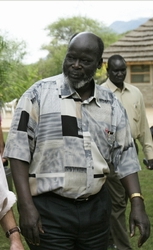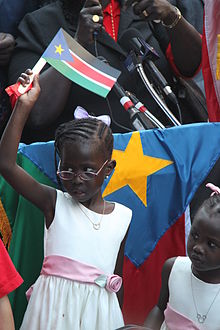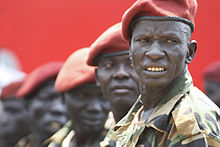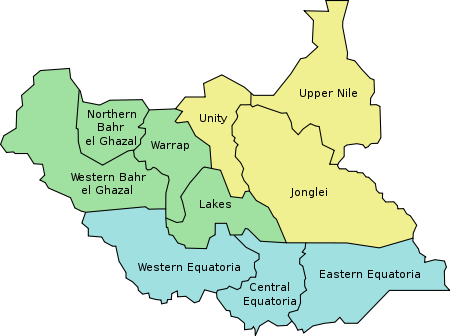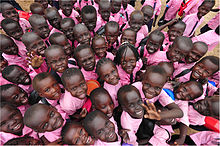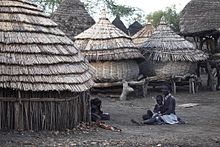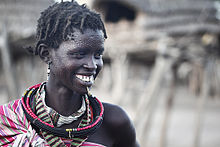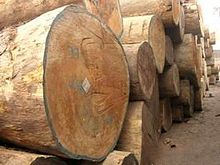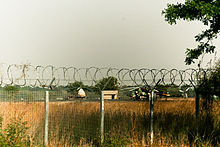
South Sudan
Background Information
The articles in this Schools selection have been arranged by curriculum topic thanks to SOS Children volunteers. Before you decide about sponsoring a child, why not learn about different sponsorship charities first?
| Republic of South Sudan | ||||||
|---|---|---|---|---|---|---|
|
||||||
| Motto: "Justice, Liberty, Prosperity" | ||||||
| Anthem: " South Sudan Oyee!" | ||||||
|
|
||||||
| Capital and largest city |
Juba 04°51′N 31°36′E |
|||||
| Official languages | English | |||||
| Recognised national languages |
and around 60 other languages
|
|||||
| Demonym | South Sudanese | |||||
| Government | Federal presidential democratic republic | |||||
| - | President | Salva Kiir Mayardit | ||||
| - | Vice President | Riek Machar Teny | ||||
| Legislature | National Legislature | |||||
| - | Upper house | Council of States | ||||
| - | Lower house | National Legislative Assembly | ||||
| Independence from Sudan | ||||||
| - | End of Anglo-Egyptian Sudan | 31 December 1955 | ||||
| - | Comprehensive Peace Agreement | 6 January 2005 | ||||
| - | Autonomy | 9 July 2005 | ||||
| - | Independence | 9 July 2011 | ||||
| Area | ||||||
| - | Total | 619,745 km2 ( 42nd) 239,285 sq mi |
||||
| Population | ||||||
| - | 2008 census | 8,260,490 (disputed) ( 94th) | ||||
| - | Density | 13.33/km2 ( 214th) 34.52/sq mi |
||||
| GDP ( PPP) | 2012 estimate | |||||
| - | Total | $10.450 billon | ||||
| - | Per capita | $1,006 | ||||
| GDP (nominal) | 2012 estimate | |||||
| - | Total | $12.202 billion | ||||
| - | Per capita | $1,174 | ||||
| Currency | South Sudanese pound ( SSP) |
|||||
| Time zone | East Africa Time ( UTC+3) | |||||
| Drives on the | right | |||||
| Calling code | +211 | |||||
| ISO 3166 code | SS | |||||
| Internet TLD | .ssa | |||||
| a. | Registered, but not yet operational. | |||||
South Sudan ( / ˌ s aʊ θ s uː ˈ d æ n / or / s uː ˈ d ɑː n /), officially the Republic of South Sudan and previously known as Southern Sudan, is a landlocked country in east-central Africa that is part of the United Nations subregion of Eastern Africa. Its current capital is Juba, which is also its largest city. The capital city is planned to be changed to the more centrally located Ramciel in the future. South Sudan is bordered by Ethiopia to the east, Kenya to the southeast, Uganda to the south, the Democratic Republic of the Congo to the southwest, the Central African Republic to the west and Sudan to the north. It includes the vast swamp region of the Sudd, formed by the White Nile and known locally as the Bahr al Jabal.
The territories of modern South Sudan and Sudan were part of Egypt under the Muhammad Ali Dynasty, and later governed as an Anglo-Egyptian condominium until Sudanese independence was achieved in 1956. Following the First Sudanese Civil War, the Southern Sudan Autonomous Region was formed in 1972 and lasted until 1983. A second Sudanese civil war soon developed and ended with the Comprehensive Peace Agreement of 2005. Later that year, southern autonomy was restored when an Autonomous Government of Southern Sudan was formed.
South Sudan became an independent state on 9 July 2011, following a referendum that passed with 98.83% of the vote. It is a United Nations member state, a member state of the African Union, and a member state of the Intergovernmental Authority on Development. In July 2012, South Sudan signed the Geneva Conventions.
History
The Nilotic peoples—the Dinka, Nuer, Shilluk and others—first entered South Sudan sometime before the 10th century. During the period from the 15th to the 19th centuries, tribal migrations, largely from the area of Bahr el Ghazal, brought these peoples to their modern locations. The non-Nilotic Azande people, who entered South Sudan in the 16th century, established the region's largest state. The Azande are the third- or fourth-largest ethnic group in South Sudan (either the Azande or the Bari are third-largest). They are found in the Maridi, Yambio, and Tambura districts in the tropical rainforest belt of Western Equatoria and Western Bahr el Ghazal. In the 18th century, the Avungara sib rose to power over the rest of Azande society and this domination continued into the 20th century. Geographical barriers prevented the spread of Islam to the southerners, thus enabling them to retain their social and cultural heritage, as well as their political and religious institutions.
The Azande have had difficult relations with the neighbours, namely the Moru, Mundu, Pöjulu, and the small groups in Bahr el Ghazal, due to the expansionist policy of their king, Gbudwe, in the 18th century. In the 19th century, the Azande fought the French, the Belgians and the Mahdists to maintain their independence. Egypt, under the rule of Khedive Isma'il Pasha, first attempted to control the region in the 1870s, establishing the province of Equatoria in the southern portion. Egypt's first governor was Samuel Baker, commissioned in 1869, followed by Charles George Gordon in 1874 and by Emin Pasha in 1878. The Mahdist Revolt of the 1880s destabilised the nascent province, and Equatoria ceased to exist as an Egyptian outpost in 1889. Important settlements in Equatoria included Lado, Gondokoro, Dufile and Wadelai. In 1947, British hopes to join South Sudan with Uganda were dashed by the Juba Conference to unify North and South Sudan.
South Sudan has an estimated population of 8 million, but, given the lack of a census in several decades, this estimate may be severely distorted. The economy is predominantly rural and relies chiefly on subsistence farming. Around 2005, the economy began a transition from this rural dominance, and urban areas within South Sudan have seen extensive development. The region has been negatively affected by two civil wars since Sudanese independence: from 1955 to 1972, the Sudanese government fought the Anyanya rebel army during the First Sudanese Civil War, followed by the Sudan People's Liberation Army/Movement (SPLA/M) in the Second Sudanese Civil War for over twenty years. As a result, the country suffered serious neglect, a lack of infrastructural development and major destruction and displacement. More than 2.5 million people have been killed and millions more have become refugees both within and outside the country.
Independence
Between 9 and 15 January 2011, a referendum was held to determine whether South Sudan should declare independence from Sudan. 98.83% of the population voted for independence. (The results for that referendum were released on 30 January 2011.) Those living in the north and expatriates living overseas also voted. This led to a formal independence on 9 July, although certain disputes still remain, such as sharing of the oil revenues, as an estimated 80% of the oil in the nation is secured from South Sudan, which would represent amazing economic potential for one of the world's most deprived areas. The region of Abyei still remains disputed and a separate referendum will be held in Abyei on whether they want to join Sudan or South Sudan. The South Kordofan conflict broke out in June 2011 between the Army of Sudan and the SPLA over the Nuba Mountains.
South Sudan is at war with at least seven armed groups in 9 of its 10 states, with tens of thousands displaced. The fighters accuse the government of plotting to stay in power indefinitely, not fairly representing and supporting all tribal groups while neglecting development in rural areas. Joseph Kony's Lord's Resistance Army (LRA) also operates in a wide area that includes South Sudan.
Inter-ethnic warfare that in some cases predates the war of independence is widespread. In December 2011, tribal clashes in Jonglei intensified between the Nuer White Army of the Lou Nuer and the Murle. The White Army warned it would wipe out the Murle and would also fight South Sudanese and UN forces sent to the area around Pibor.
In March 2012, South Sudanese forces seized the Heglig oil fields in lands claimed by both Sudan and South Sudan in the province of South Kordofan after conflict with Sudanese forces in the South Sudanese state of Unity. South Sudan withdrew on 20 March, and the Sudanese Army entered Heglig two days later.
Politics
Government
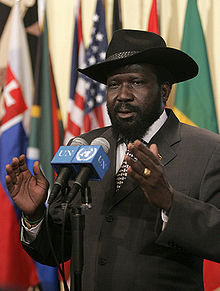
The now-defunct Southern Sudan Legislative Assembly ratified a transitional constitution shortly before independence on 9 July 2011. The constitution was signed by the President of South Sudan on Independence Day and thereby came into force. It is now the supreme law of the land, superseding the Interim Constitution of 2005. The constitution establishes a mixed presidential system of government headed by a president who is head of state, head of government, and commander-in-chief of the armed forces. It also establishes the National Legislature comprising two houses: a directly elected assembly, the National Legislative Assembly; and a second chamber of representatives of the states, the Council of States. John Garang, the founder of the SPLA/M was the first president of the autonomous government until his death on 30 July 2005. Salva Kiir Mayardit, his deputy, was sworn in as First Vice President of Sudan and President of the Government of Southern Sudan on 11 August 2005. Riek Machar replaced him as Vice-President of the Government. Legislative power is vested in the government and the bicameral National Legislature. The constitution also provides for an independent judiciary, the highest organ being the Supreme Court.
Developing state capacity
The post-conflict environment is important to understanding the Government of South Sudan's ability to function and successfully implement its policies. The Government of South Sudan has had significant success in building its own capacity by developing an integrated system for planning and budget preparation. This has been achieved through the leadership of the Ministry of Finance, the strong technical leadership and support of that same ministry and making these goals relevant to local capacity. The results have been that the government has been better able to manage the financial aspects of its functions and projects, and increases in the expertise of its staff in crucial skills, such as basic IT.
National capital project
The capital of South Sudan is located at Juba, which is also the state capital of Central Equatoria and the county seat of the eponymous Juba County, as well as being the country's largest city. However, due to Juba's poor infrastructure and massive urban growth, as well as its lack of centrality within South Sudan, the South Sudanese Government adopted a resolution in February 2011 to study the creation of a new planned city to act as the seat of the government. This proposal is functionally similar to construction projects in Abuja, Nigeria; Brasília, Brazil; and Canberra, Australia; among other modern era planned national capitals. It is unclear how the government will fund the project.
In September 2011, a spokesman for the government said the country's political leaders had accepted a proposal to build a new capital at Ramciel, a place in Lakes state near the borders with Central Equatoria, Eastern Equatoria, and Jonglei. Ramciel is considered to be the geographical centre of the country, and the late pro-independence leader John Garang allegedly had plans to relocate the capital there before his death in 2005. The proposal was supported by the Lakes state government and at least one Ramciel tribal chief. The design, planning, and construction of the city will likely take as many as five years, government ministers said, and the move of national institutions to the new capital will be implemented in stages.
States and counties
South Sudan is divided into ten states, which correspond to three historical regions: Bahr el Ghazal, Equatoria, and Greater Upper Nile.
- Bahr el Ghazal
- Northern Bahr el Ghazal
- Western Bahr el Ghazal
- Lakes
- Warrap
- Equatoria
- Western Equatoria
- Central Equatoria (containing the national capital city of Juba)
- Eastern Equatoria
- Greater Upper Nile
- Jonglei
- Unity
- Upper Nile
The 10 states are further subdivided into 86 counties.
The Abyei Area, a small region of Sudan bordering on the South Sudanese states of Northern Bahr el Ghazal, Warrap, and Unity, currently has a special administrative status in Sudan and is governed by an Abyei Area Administration. It was due to hold a referendum in 2011 on whether to join South Sudan or remain part of the Republic of Sudan, but in May the Sudanese military seized Abyei, and it is not clear if the referendum will be held.
Military
A Defense paper was initiated in 2007 by then Minister for SPLA Affairs Dominic Dim Deng, and a draft was produced in 2008. It declared that Southern Sudan would eventually maintain land, air, and riverine forces.
Foreign relations
Since independence, relations with Sudan have been changing. Sudan's President Omar al-Bashir first announced, in January 2011, that dual citizenship in the North and the South would be allowed, but upon the independence of South Sudan he retracted the offer. He has also suggested an EU-style confederation. Essam Sharaf, Prime Minister of Egypt after the 2011 Egyptian revolution, made his first foreign visit to Khartoum and Juba in the lead-up to South Sudan's secession. Israel quickly recognized South Sudan as an independent country, and is host to thousands of refugees from South Sudan, who now face deportation to their native country. Egypt, Sudan, Germany and Kenya were first to recognise the country's independence on 8 July 2011.
South Sudan is a member state of the United Nations, the African Union, and the Common Market for Eastern and Southern Africa. South Sudan plans to join the Commonwealth of Nations, the East African Community, the International Monetary Fund, and the World Bank. Full membership in the Arab League has been assured, should the country's government choose to seek it, though it could also opt for observer status. It was admitted to UNESCO on 3 November 2011. On 25 November 2011, it officially joined the Intergovernmental Authority on Development, a regional grouping of East African states.
While the United States lifted all economic and political sanctions against South Sudan as of July 2011, the sanctions imposed against neighboring Sudan, especially those relating to oil and financial sector transactions, are likely to continue to impact the new nation. A 2011 Congressional Research Service report, "The Republic of South Sudan: Opportunities and Challenges for Africa’s Newest Country", identifies outstanding political and humanitarian issues as the country forges its future.
Human rights
Campaigns of atrocities against civilians have been attributed to the SPLA. In the SPLA/M's attempt to disarm rebellions among the Shilluk and Murle, they burned scores of villages, raped hundreds of women and girls and killed an untold number of civilians. Civilians alleging torture claim fingernails being torn out, burning plastic bags dripped on children to make their parents hand over weapons and villagers burned alive in their huts if rebels were suspected of spending the night there. In May 2011, the SPLA allegedly set fire to over 7,000 homes in Unity State. The UN reports many of these violations and the frustrated director of one Juba-based international aid agency calls them "human rights abuses off the Richter scale". In 2010, the CIA issued a warning that "over the next five years,...a new mass killing or genocide is most likely to occur in southern Sudan." The Nuer White Army has stated it wished to " wipe out the entire Murle tribe on the face of the earth as the only solution to guarantee long-term security of Nuer’s cattle" and activists, including Minority Rights Group International, warn of genocide in the current Jonglei conflict.
Peter Abdul Rahaman Sule, the leader of the key opposition group United Democratic Forum, has been under arrest since 3 November 2011 over allegations linking him to the formation of a new rebel group fighting against the government.
Geography

South Sudan lies between latitudes 3° and 13°N, and longitudes 24° and 36°E. It is covered in tropical forest, swamps, and grassland. The White Nile passes through the country, passing by Juba.
Biodiversity
South Sudan's protected area of Bandingilo National Park hosts the second-largest wildlife migration in the world. Surveys have revealed that Boma National Park, west of the Ethiopian border, as well as the Sudd wetland and Southern National Park near the border with Congo, provided habitat for large populations of hartebeest, kob, topi, buffalo, elephants, giraffes, and lions. South Sudan's forest reserves also provided habitat for bongo, giant forest hogs, red river hogs, forest elephants, chimpanzees, and forest monkeys. Surveys begun in 2005 by WCS in partnership with the semi-autonomous government of Southern Sudan revealed that significant, though diminished wildlife populations still exist, and that, astonishingly, the huge migration of 1.3 million antelopes in the southeast is substantially intact.
Habitats in the country include grasslands, high-altitude plateaus and escarpments, wooded and grassy savannas, floodplains, and wetlands. Associated wildlife species include the endemic white-eared kob and Nile Lechwe, as well as elephants, giraffes, common eland, giant eland, oryx, lions, African wild dogs, cape buffalo, and topi (locally called tiang). Little is known about the white-eared kob and tiang, both types of antelope, whose magnificent migrations were legendary before the civil war. The Boma-Jonglei Landscape region encompasses Boma National Park, broad pasturelands and floodplains, Bandingilo National Park, and the Sudd, a vast area of swamp and seasonally flooded grasslands that includes the Zeraf Wildlife Reserve.
Little is known of the fungi of South Sudan. A list of fungi in Sudan was prepared by S.A.J. Tarr and published by the then Commonwealth Mycological Institute (Kew, Surrey, UK) in 1955. The list, of 383 species in 175 genera, included all fungi observed within the then boundaries of the country. Many of those records relate to what is now South Sudan. Most of the species recorded were associated with diseases of crops. The true number of species of fungi in South Sudan is likely much higher.
In 2006, President Kiir announced that his government would do everything possible to protect and propagate South Sudanese fauna and flora, and seek to reduce the effects of wildfires, waste dumping, and water pollution. The environment is threatened by the development of the economy and infrastructure.
Several ecoregions extend across South Sudan: the East Sudanian savanna, Northern Congolian forest-savanna mosaic, Saharan flooded grasslands (Sudd), Sahelian Acacia savanna, East African montane forests, and the Northern Acacia- Commiphora bushlands and thickets.
Climate
South Sudan has a climate similar to an Equatorial or tropical climate, characterized by a rainy season of high humidity and large amounts of rainfall followed by a drier season. The temperature on average is always high with July being the coolest month with an average temperatures falling between 68 and 86 °F (20 and 30 °C) and March being the warmest month with average temperatures ranging from 73 to 98 °F (23 to 37 °C).
The most rainfall is seen between May and October, but the rainy season can commence in April and extend until November. On average May is the wettest month. The season is "influenced by the annual shift of the Inter-Tropical Zone" and the shift to southerly and southwesterly winds leading to slightly lower temperatures, higher humidity, and more cloud coverage.
Demographics
South Sudan has a population of around 8 million and a predominantly rural, subsistence economy. This region has been negatively affected by war for all but 10 years of the independence period (1956), resulting in serious neglect, lack of infrastructure development, and major destruction and displacement. More than 2 million people have died, and more than 4 million are internally displaced persons or became refugees as a result of the civil war and war-related impacts. Here the South Sudanese practice mainly indigenous traditional beliefs, although some practice Christianity, as a result of Christian missionary efforts. South Sudan contains many tribal groups and uses many more languages than Sudan. The major ethnic groups present in South Sudan are the Dinka at more than 1 million (approximately 15 percent combined), the Nuer (approximately ten percent), the Bari, and the Azande. The Shilluk constitute a historically influential state along the White Nile, and their language is fairly closely related to Dinka and Nuer. The traditional territories of the Shilluk and the Northeastern Dinka are adjacent.
Education
Unlike the previous educational system of the regional Southern Sudan—which was modelled after the system used in the Republic of Sudan since 1990—the current educational system of the Republic of South Sudan follows the 8 + 4 + 4 system (similar to Kenya). Primary education consists of eight years, followed by four years of secondary education, and then four years of university instruction. The primary language at all levels is English, as compared to the Republic of Sudan, where the language of instruction is Arabic. In 2007 South Sudan adopted English as the official language of communication. There is a severe shortage of English teachers and English-speaking teachers in the scientific and technical fields.
Languages
The official language of South Sudan is English.
Indigenous languages
There are over 60 indigenous languages spoken in South Sudan. Most of the indigenous languages are classified under the Nilo-Saharan language family; collectively, they represent two of the first order divisions of Nilo-Saharan (Eastern Sudanic and Central Sudanic). The remainder belong to the Ubangi languages of the Niger–Congo language family, and they are spoken in the southwest. The most recent available population statistics for many South Sudan indigenous languages go back to the 1980s. Since then, the war of independence led to many civilian deaths and massive displacement of refugees to Sudan and beyond. Due to the drafting of colonial borders in Africa by European powers during the 19th and 20th centuries, some indigenous languages of South Sudan are spoken in neighboring countries, in some cases more so than in South Sudan. Zande, for example is estimated to have twice as many speakers in the neighboring Democratic Republic of the Congo, while the Banda group of languages may have more speakers in the Central African Republic than in South Sudan. In South Sudan, the languages with the most speakers are Nuer with 740,000 speakers in 1982, and Dinka sociolinguistic language or dialect continuum with perhaps 1.4 million in 1986; these two groups of languages are also closely related to one another. Bari had 420,000 in 2000, and Zande had 350,000 in 1982. Of the Ubangi languages, available figures indicate that Zande is the only one with a substantial number of speakers in South Sudan.
Non-indigenous languages
In the state of Western Bahr Al Ghazal, in its border region with the neighboring country of Sudan, there is an indeterminate number of Baggara Arabs—a traditionally nomadic people—that resides either seasonally or permanently. Their language is Chadian Arabic and their traditional territories are in the southern portions of the Sudanese regions of Kordofan and Darfur. In the capital, Juba, there are several thousand people who use an Arabic pidgin, Juba Arabic. Since South Sudan was part of Sudan for a century, some South Sudanese are conversant in either Sudanese Arabic or Modern Standard Arabic.
During the Rejaf Conference held in April 1928 during the Anglo-Egyptian condominium it was decided that schooling in the South would be in the English language. Although since independence the government tried to replace English with Arabic, part of the peace agreement in 1972 ensured that English continued as the medium of education in most schools in southern Sudan. English is widely spoken by those who have had the opportunity of going to school, either within South Sudan or in the diaspora.
South Sudan's ambassador to Kenya said on 2 August 2011 that Swahili will be introduced in South Sudan with the goal of supplanting Arabic as a lingua franca, in keeping with the country's intention of orientation toward the East African Community rather than Sudan and the Arab League.
A group of South Sudanese refugees who were raised in Cuba during the Sudanese wars, numbering about 600, also speak fluent Spanish. They have been named the Cubanos, and most had settled in Juba by the time of the country's independence.
Population
2008 census
The "Fifth Population and Housing Census of Sudan", of Sudan as a whole, was conducted in April 2008. However, the census results of Southern Sudan were rejected by Southern Sudanese officials on reported grounds that "the central bureau of statistics in Khartoum refused to share the national Sudan raw census data with the southern Sudan centre for census, statistics and evaluation." The census counted the Southern Sudan population at 8.26 million; However, President Kiir had "suspected figures were being deflated in some regions and inflated in others, and that made the final tally 'unacceptable'." He also claimed the Southern Sudanese population to really be one-third of Sudan, while the census showed it is only 22%. Many southern Sudanese were also said to had been uncounted "due to bad weather, poor communication and transport networks, and some areas were unreachable, while many southern Sudanese remained in exile in neighbouring countries, leading to 'unacceptable results', according [to] southern Sudanese authorities." The chief American technical adviser for the census in the South said the census-takers probably reached 89% of the population.
2009 census
In 2009, Sudan started a new Southern Sudanese census ahead of the 2011 independence referendum, which is said to also include the Southern Sudanese diaspora. However this initiative was criticised as it was to leave out countries with a high share of the Southern Sudanese diaspora, and rather count countries where the diaspora share was low.
Religion
Religions followed by the South Sudanese include traditional indigenous religions, Christianity, and Islam. The last census to mention the religion of southerners dates back to 1956 where a majority were classified as following traditional beliefs or were Christian while 18% were Muslim. Scholarly and U.S. Department of State sources state that a majority of southern Sudanese maintain traditional indigenous (sometimes referred to as animist) beliefs with those following Christianity in a minority (albeit an influential one), making South Sudan one of the very few countries in the world where most people follow traditional indigenous religion. According to the Federal Research Division of the US Library of Congress: "in the early 1990s possibly no more than 10 percent of southern Sudan's population was Christian". In the early 1990s, official records of Sudan claimed that from population of what then included South Sudan, 25% of people followed traditional religions and 5% were Christians. However, some news reports claim a Christian majority, and the US Episcopal Church claims the existence of large numbers of Anglican adherents from the Episcopal Church of the Sudan: 2 million members in 2005. Likewise, according to the World Christian Encyclopedia, the Catholic Church is the largest single Christian body in Sudan since 1995, with 2.7 million Catholics mainly concentrated in South Sudan. The Presbyterian Church in Sudan is the third largest denomination in Southern Sudan. It has about 1,000 000 members in 500 congregations.
Speaking at Saint Theresa Cathedral in Juba, South Sudanese President Kiir, a Roman Catholic, said that South Sudan would be a nation that respects freedom of religion. Amongst Christians, most are Catholic and Anglican, though other denominations are also active, and animist beliefs are often blended with Christian beliefs.
Culture
Due to the many years of the civil war, South Sudan's culture is heavily influenced by its neighbors. Many South Sudanese fled to Ethiopia, Kenya and Uganda where they interacted with the nationals and learnt their languages and culture. For most of those who remained in the country, or went north to Sudan and Egypt, they greatly assimilated Arab culture.
Most South Sudanese kept the core of their culture even while in exile and diaspora. Traditional culture is highly upheld and a great focus is given to knowing one's origin and dialect. Although the common languages spoken are Arabi Juba and English, Kiswahili is being introduced to the population to improve the country's relations with its East African neighbors.
Music
Many music artists from South Sudan use English, Kiswahili, Arabi Juba, their dialect or a mix of all. Popular artists like Yaba Angelosi sings Afro-beat, R&B, and Zouk; Dynamq is popular for his reggae releases; and Emmanuel Kembe who sings folk, reggae and Afro-beat. Emmanuel Jal is one South Sudanese music artist who has broken through on an international level with his unique form of Hip Hop and a positive message in his lyrics. Jal, a former child soldier turned musician received good airplay and album reviews in the UK and has also been sought out for the lecture circuit with major talks at popular talkfests like TED.
Games and sports
Many traditional and modern games and sports are popular in South Sudan, particularly wrestling and mock battles. The traditional sports were mainly played after the harvest seasons to celebrate the harvests and finish the farming seasons. During the matches, they smeared themselves with ochre – perhaps to enhance the grip or heighten their perception. The matches attracted large numbers of spectators who sang, played drums and danced in support of their favourite wrestlers. Though these were perceived as competition, they were primarily for entertainment.
In the modern era, South Sudanese have excelled in international sports. Luol Deng is a National Basketball Association star in the United States, where he plays for the Chicago Bulls; at the international level, he represents Great Britain. Other leading international basketball players from South Sudan include Manute Bol, Kueth Duany, Deng Gai and Ater Majok. The South Sudan national basketball team played its first match against Uganda national basketball team on 10 July 2011 in Juba.
Association football is also becoming popular in South Sudan, and there are many initiatives by the Government of South Sudan and other partners to promote the sport and improve the level of play. One of these initiatives is South Sudan Youth Sports Association (SSYSA). SSYSA is already holding football clinics in Konyokonyo and Muniki areas of Juba in which young boys are coached. In recognition of these efforts with youth football, the country recently hosted the CECAFA youth football competitions. Barely a month earlier, it had also hosted the larger East African Schools Sports tournaments. The South Sudan national association football team joined the Confederation of African Football in February 2012 and became a full FIFA member in May 2012. The team played its first match against Tusker FC of the Kenyan Premier League on 10 July 2011 in Juba as part of independence celebrations, scoring early but losing 1–3 to the more experienced team. Famous South Sudanese footballers are James Moga, Richard Justin, Athir Thomas, Goma Genaro Awad, Khamis Leyano, Khamis Martin and Roy Gulwak.
One athlete from South Sudan, Guor Marial, competed in the 2012 Summer Olympics. Due to South Sudan not as yet possessing an official Olympics organization, and Marial not yet possessing American citizenship, he, along with three athletes from the former Netherlands Antilles, competed under the banner of Independent Olympic Athletes.
Economy
The economy of South Sudan is one of the world's weakest and most underdeveloped with South Sudan having little existing infrastructure and the highest maternal mortality and female illiteracy rates in the world as of 2011. South Sudan exports timber to the international market. The region also contains many natural resources such as petroleum, iron ore, copper, chromium ore, zinc, tungsten, mica, silver, gold, diamonds, hardwoods, limestone and hydropower. The country's economy, as in many other developing countries, is heavily dependent on agriculture.
Oil
The oilfields in the South have kept the region's economy alive since 1999. However, after South Sudan became an independent nation in July 2011, southern and northern negotiators were not immediately able to reach an agreement on how to split the revenue from these southern oilfields. It is estimated that South Sudan has around 4 times the oil deposits of Sudan. The oil revenues, according to the Comprehensive Peace Agreement (CPA), were split equally for the duration of the agreement period. Since South Sudan relies on pipelines, refineries, and Port Sudan's facilities in Red Sea state in Sudan, the agreement stated that the government of Sudan in Khartoum would receive a 50% share of all oil revenues. This arrangement was maintained during the second period of autonomy from 2005 to 2011.
In the run up to independence, northern negotiators reportedly pressed for a deal maintaining the 50–50 split of oil revenues, while the South Sudanese were holding out for more favorable terms. Oil revenues constitute more than 98% of the government of South Sudan's budget according to the southern government's Ministry of Finance and Economic Planning and this has amounted to more than $8 billion in revenue since the signing of the peace agreement. However, after independence, South Sudan objected to Sudan charging US$34 per barrel to transport oil through the pipeline to the oil terminal at Port Sudan. With production of around 30,000 barrels per day, this was costing over a million dollars per day. In January 2012, South Sudan finally suspended oil production, causing a dramatic reduction in revenue and food costs to rise by 120%.
South Sudan's economy is under pressure to diversify away from oil as oil reserves will likely halve by 2020 if no new finds are made, according to the International Monetary Fund (IMF).
Debt
In terms of South Sudan’s external debt, Sudan and South Sudan maintain a shared debt of approximately 38 billion dollars, all of which has accumulated throughout the past five decades. Though a small portion of this debt is owed to such international institutions as the World Bank and the International Monetary Fund (approximately 5.3 billion according to a 2009 report provided by the Bank of Sudan), the bulk of its debt load is actually owed to numerous foreign actors that have provided the nation with financial loans, including the Paris Club (over 11 billion dollars) and also non-Paris Club bilateral creditors (over 13 billion dollars). The Paris Club refers to an informal group of financial officials from 19 of the world’s most influential economies, including such member nations as the United States, the United Kingdom, Germany, France and Canada, while non-Paris Club bilateral creditors refers to any entity that does not enjoy permanent/associated status as a Paris Club member. Private bilateral creditors (i.e. private commercial banks and private credit suppliers) account for the majority of the remainder (approximately 6 billion of the total debt). While it is possible to arrive at a relatively accurate determination of the region’s total debt accumulation, it is not yet possible to determine precisely how much debt the newly formed nation of South Sudan independently carries, as an agreement has not yet been reached between Sudan and South Sudan regarding this highly contentious issue.
East African Community possible membership
The presidents of Kenya and Rwanda invited the Autonomous Government of Southern Sudan to apply for membership upon the independence of South Sudan in 2011, and South Sudan was reportedly an applicant country as of mid-July 2011. As of early October, South Sudan is said to officially become a member in the future. Analysts suggested that South Sudan's early efforts to integrate infrastructure, including rail links and oil pipelines, with systems in Kenya and Uganda indicated intention on the part of Juba to pivot away from dependence on Sudan and toward East Africa. Reuters considers South Sudan the likeliest candidate for EAC expansion in the short term, and an article in Tanzanian daily The Citizen that reported East African Legislative Assembly Speaker Abdirahin Haithar Abdi said South Sudan was "free to join the EAC" asserted that analysts believe the country will soon become a full member of the regional body. On 17 September 2011, the Daily Nation quoted a South Sudanese MP as saying that while his government was eager to join the EAC, it would likely delay its membership over concerns that its economy was not sufficiently developed to compete with EAC member states and could become a "dumping ground" for Kenyan, Tanzanian, and Ugandan imports. This was contradicted by President Salva Kiir, who announced South Sudan had officially embarked on the application process one month later.
Transport
Railway
South Sudan has 248 km (154 mi) of single-track 1,067 mm (3 ft 6 in) narrow gauge railway line from the Sudanese border to Wau terminus. There are proposed extensions from Wau to Juba. There are also plans to link Juba with the Kenyan and Ugandan railway networks.
Air
The busiest and most developed airport in South Sudan is Juba Airport, which has regular international connections to Entebbe, Nairobi, Cairo, Addis Ababa, and Khartoum. Juba Airport is also the home base of Feeder Airlines Company and Southern Star Airlines. Other international airports include Malakal, with international flights to Addis Ababa and Khartoum; Wau, with weekly service to Khartoum; and Rumbek, also with weekly flights to Khartoum. Southern Sudan Airlines also serves Nimule and Akobo, which have unpaved runways. Several smaller airports exist throughout South Sudan, the majority consisting of little more than dirt runways.
On 4 April 2012, plans were unveiled to launch a South Sudanese national airline, primarily for domestic service at first but eventually expanding to international service.
Humanitarian situation
South Sudan is acknowledged to have some of the worst health indicators in the world. The under-five infant mortality rate is 135.3 per 1,000, whilst maternal mortality is the highest in the world at 2,053.9 per 100,000 live births. In 2004, there were only three surgeons serving southern Sudan, with three proper hospitals, and in some areas there was just one doctor for every 500,000 people.
The epidemiology of HIV/AIDS in the South Sudan is poorly documented but the prevalence is believed around 3.1%.
At the time of the Comprehensive Peace Agreement of 2005, humanitarian needs in Southern Sudan were massive. However, humanitarian organizations under the leadership of the UN Office for the Coordination of Humanitarian Affairs (OCHA) managed to ensure sufficient funding to bring relief to the local populations. Along with recovery and development aid, humanitarian projects were included in the 2007 Work Plan of the United Nations and partners. More than 90% of the population of South Sudan live on less than $1 a day, despite the GDP per capita of the entirety of Sudan being $1200 ($3.29/day).
In 2007, the United Nations OCHA (under the leadership of Éliane Duthoit) decreased its involvement in Southern Sudan, as humanitarian needs gradually diminished, slowly but markedly turning over control to the recovery and development activities of NGOs and community-based organisations.
Famine reportedly led to deaths in Northern Bahr el Ghazal and Warrap states in mid-2011, though the state governments of both denied hunger there was severe enough to cause fatalities.
In Pibor County located in the Jonglei State, in December 2011 and January 2012, cattle raids led to border clashes that eventually resulted in widespread ethnic violence, with thousands of deaths and tens of thousands of South Sudanese being displaced, and hundreds of Médecins Sans Frontières staff went missing. The government declared the area a disaster zone and took control from local authorities.
Water crisis
The water supply in Southern Sudan is faced with numerous challenges. It is estimated that between 50% and 60% of the population of South Sudan has access to an improved water source, such as a hand pump, a protected well or – for a small minority – piped water supply. Although the White Nile runs through the country, water is scarce during the dry season in areas that are not located on the river; about half the population does not have access to an improved water source, defined as a protected well, standpipe or a handpump within 1 km; the few existing piped water supply systems are often not well maintained and the water they provide is often not safe to drink; displaced people returning home put a huge strain on infrastructure; and the government institutions in charge of the sector are weak. Substantial external funding from numerous government agencies and non-governmental organizations is available to improve water supply.
Numerous non-governmental organizations support water supply in Southern Sudan, such as the Obakki Foundation and Bridgton-Lake Region Rotary Club from North America.




